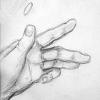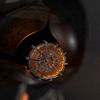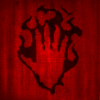So, I have these vector, cartoon-like characters dressed in loose clothes with lots of folds (like cloaks, capes, mantles, etc.)
What's the best way to animate them? It they were with a more revealed anatomy I would probably draw all parts of their bodies separately so to make joints for animation. But what if my characters wear this type of clothes I described above? Do I have to draw every single frame? Or probably I should model and animate them in 3d? The main problem is with the folds.
I have to choose the most rational way because there is lots of animation to do.
Thank you for any advice!
2d animation - need advice?
Can you link an example of the art you mean?
I might suggest 3D if the library is as big as you say and you're feeling overwhelmed by the frame by frame. Remember with keyframe animation, always do dynamic or overlaping animation last. Get your characters core animated properly first, then focus on interacting (or contacting) limbs (arms and legs), small joints(hands, fingers, feet, toes, claws, etc), expressive features (muscles, veins, eyes, mouth, etc), overlapping features (fat, boobs, hair, clothes, etc). Pencil it, test it, ink it, test it, color it, test it, add 3D, test it then render it all together and move it from the WIP folder to the FIN folder (maybe test it again just to be sure). Oh and don't forget to save and backup!
What kind of environments are you exploring? Those folds are made dynamic by the lighting, which will change unless all the environments all have the same lighting.
Computers are stupid machines, better to just animate each frame by hand ;D
I might suggest 3D if the library is as big as you say and you're feeling overwhelmed by the frame by frame. Remember with keyframe animation, always do dynamic or overlaping animation last. Get your characters core animated properly first, then focus on interacting (or contacting) limbs (arms and legs), small joints(hands, fingers, feet, toes, claws, etc), expressive features (muscles, veins, eyes, mouth, etc), overlapping features (fat, boobs, hair, clothes, etc). Pencil it, test it, ink it, test it, color it, test it, add 3D, test it then render it all together and move it from the WIP folder to the FIN folder (maybe test it again just to be sure). Oh and don't forget to save and backup!
What kind of environments are you exploring? Those folds are made dynamic by the lighting, which will change unless all the environments all have the same lighting.
Computers are stupid machines, better to just animate each frame by hand ;D
How did you originally make these characters? Do you have Photoshop, flash, or a 3d program?
I'd also like to see an example.
I'd also like to see an example.
Yeah, I don't think there's an easy way out. If you're going to hand animate it, I would make one or two well done cape animations, and then re-color and scale them to fit each of the characters if possible, adding small touches to each version like trim or shoulder armor as needed to differentiate characters.
To me, animating flowing fabric in 3D sounds almost more painful.
To me, animating flowing fabric in 3D sounds almost more painful.
For 3D I know Poser has cloth physics. You could clothe a dummy model the way you want, animate it, then render out the clothing's movements, or just do a full render of the animation of each character in 3d, though then you need real models, not dummy stand ins. At the very least this could serve as reference material for cell animation.
Thank you guys for the responses.
I actually haven't drawn my characters yet. I'd want to define first the animation methods for them (that probably will determine their appearance in certain ways).
Not exactly what I have in my head but maybe something similar:
http://ninjalooter.d...eister_T2_2.png
Some of my characters will be covered in loose clothes like this -
http://thelifestream...an-in-black.png
Just imagine the head and shoulders of this warrior combined with the cape below (so his anatomy is covered and you can use the same cape with another head plus hands). How would you animate him?
Thank you again for your help!
I actually haven't drawn my characters yet. I'd want to define first the animation methods for them (that probably will determine their appearance in certain ways).
Not exactly what I have in my head but maybe something similar:
http://ninjalooter.d...eister_T2_2.png
Some of my characters will be covered in loose clothes like this -
http://thelifestream...an-in-black.png
Just imagine the head and shoulders of this warrior combined with the cape below (so his anatomy is covered and you can use the same cape with another head plus hands). How would you animate him?
Thank you again for your help!
Poser dummy body for each general body type. Animate, then replace the bits that stick out with the ones you want.
Are you planning on using a 2D perspective for these characters? The camera always being fixed, but character appear to move in 3 dimensions?
If this is so and whatever you're planning on using these for should either be rendered in a 3D environment as 3D objects or rendered in a 2D/3D environment with a fixed camera and a sprite sheet which is composed of a sequence of images that play a loop that make the character's look like they're moving. This method is similar to traditional 2D animation but there are a few ways I know you can achieve this.
Hand drawing these characters and their assets can be time consuming unless you build preset body parts that can be added and removed per frame of animation. Clothes would be done the same way. Both the character, and any clothes or objects will need front, and side perspectives, or full 360 perspectives drawn for each character or object. Unless an animation has been tweened. Tweening can be useful for generating frames in between movements, but is mostly effective in 3D applications.
Now instead of drawing each by hand, you can create 3D models of characters, objects, clothes, environments, anything....
3D objects, once finished can be manipulated to any degree with near limitless customization. The same principle applies to hand drawn characters and objects, the only difference being that characters, clothes, and objects are rendered objects but are still 2D images that can be used in creating a sequence of images that can then be used as a sprite sheet.
I'd recommend using 3D. You can rig models and pose them however you like. Images can be rendered out to any size. Models can be adjusted to look north, east, west, south, N/E,N/W, S/E,S/W (North East for example) and will retain their shape perfectly without the need to redraw shapes that were erased when repositioning a character or object in 2D.
If this is so and whatever you're planning on using these for should either be rendered in a 3D environment as 3D objects or rendered in a 2D/3D environment with a fixed camera and a sprite sheet which is composed of a sequence of images that play a loop that make the character's look like they're moving. This method is similar to traditional 2D animation but there are a few ways I know you can achieve this.
Hand drawing these characters and their assets can be time consuming unless you build preset body parts that can be added and removed per frame of animation. Clothes would be done the same way. Both the character, and any clothes or objects will need front, and side perspectives, or full 360 perspectives drawn for each character or object. Unless an animation has been tweened. Tweening can be useful for generating frames in between movements, but is mostly effective in 3D applications.
Now instead of drawing each by hand, you can create 3D models of characters, objects, clothes, environments, anything....
3D objects, once finished can be manipulated to any degree with near limitless customization. The same principle applies to hand drawn characters and objects, the only difference being that characters, clothes, and objects are rendered objects but are still 2D images that can be used in creating a sequence of images that can then be used as a sprite sheet.
I'd recommend using 3D. You can rig models and pose them however you like. Images can be rendered out to any size. Models can be adjusted to look north, east, west, south, N/E,N/W, S/E,S/W (North East for example) and will retain their shape perfectly without the need to redraw shapes that were erased when repositioning a character or object in 2D.
This topic is closed to new replies.
Advertisement
Popular Topics
Advertisement







